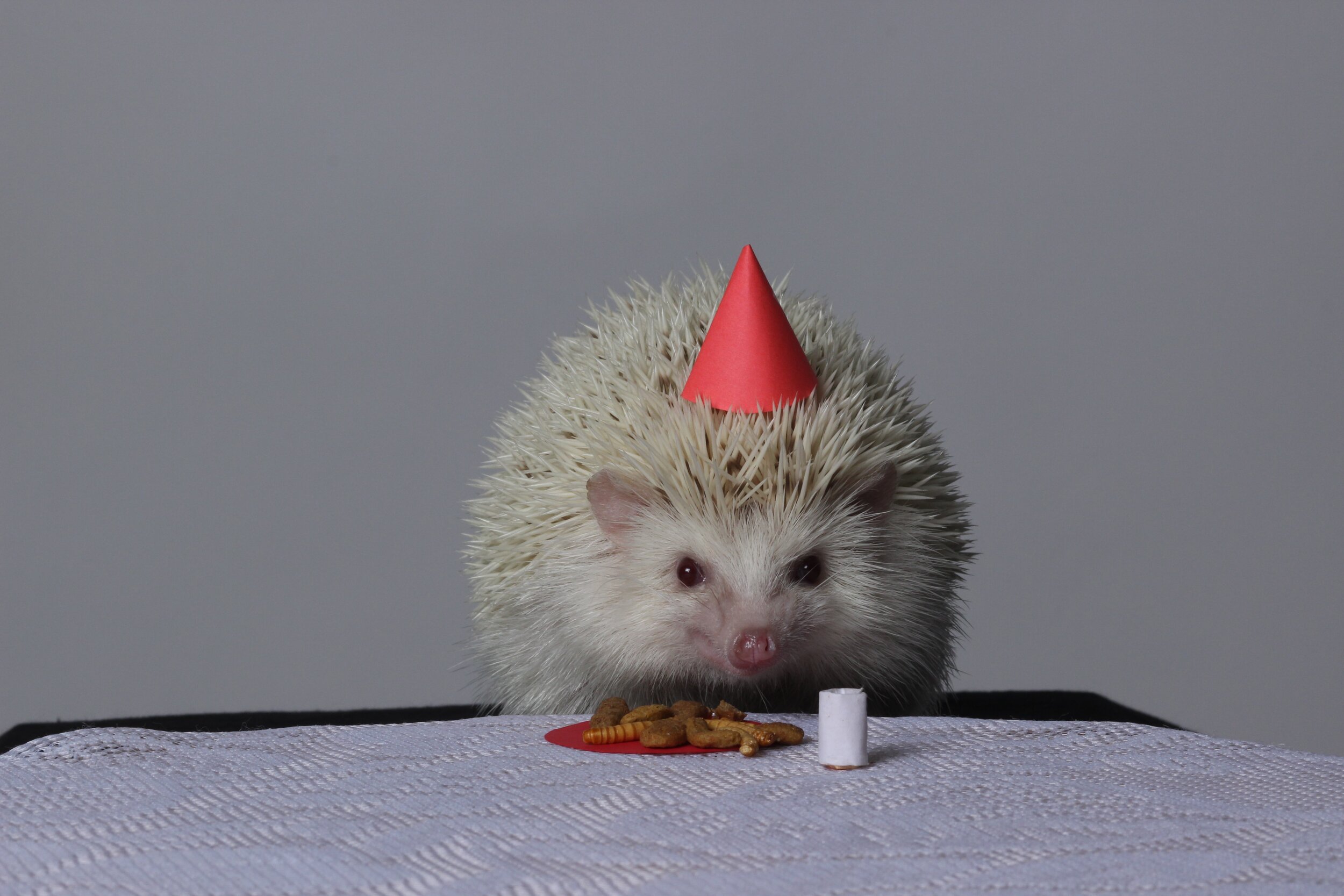Hooray for the HEDGEHOG
The hedgehog is possibly the UK’s most recognisable mammal. With a coat of distinctive spikes, they certainly stand out from the rest of our wildlife. It’s also a creature that lives right alongside us humans, whilst hedgehogs are often found in woodlands, fields and scrubby areas, they are also quite fond of the flowerbeds, patios and lawns we have in our gardens.
With hedgehogs being fully active right now, what better time than to learn all about this prickly, garden visitor?
What is a hedgehog?
Hedgehogs are small, roundish shaped mammals covered in short, strong spines, usually dark in colour with lighter tips. These spines are made of a substance called keratin – which is the same thing our fingernails are made of! Although, they aren’t completely covered in prickles – they have bare bellies, whiskered faces and even tiny, little tails.
Hedgehogs come out at night, which means they’re nocturnal, to search for food. They aren’t fussy eaters and will eat most things, but their main menu includes worms, slugs, snails and beetles. With poor eyesight they rely on their strong sense of smell and great hearing to find food.
Notoriously noisy, these spiny creatures can often be heard snuffling, snorting, and slurping away on their snacks, as well as communicate to each other using a range of grunts, squeaks and squeals.
After spending the winter hibernating in well sheltered spots, hedgehogs wake up around April time and are active all through the summer into the Autumn. Which means now is a great time to look out for them in your garden.
How do tell if you have a hedgehog in your garden?
Probably the best indicator of hedgehog presence is hedgehog poop! Their small dark droppings usually with a few beetle shells thrown in, whilst a bit gross, they are a sure sign that you have a hedgehog house guest.
You may notice little trails appearing in your lawn, heading to and from gaps in the fence or other open spaces – these are potential evidence of a hedgehog, or another small mammal. Investigate further by leaving out a piece of white paper or card overnight, weighed down with some stones. Check it in the next morning for footprints to discover who’s visiting overnight.
We also know Hedgehogs are noisy, so use that to your advantage. Standing in the garden after dark can you hear any snuffles and grunts? If you can then that’s a good indication that you may have a hedgehog caller, and certainly worth exploring further.
Hedgehogs in need.
Despite its amazing adaptability to live alongside humans, and being relatively widespread across the UK, our hedgehog population is struggling due to: cars, the use of slug pellets in gardens, rubbish, and the blocking up of holes in our fences. Hedgehogs need to travel to forage, so the small gaps in our garden fences and hedges are really important to allow hedgehogs to come and go.
As humans we have a tendency to want to contain things, keep them neat and tidy, and while this can sometimes help our hedgehog friends (more on that later) a little bit of wildness in our gardens can go a long way.
How can you help hedgehogs?
These tips will help keep your resident hog happy, and perhaps encourage one to visit if you don’t have one already:
· Create a hedgehog highway – make sure there’s a hedgehog-sized hole in garden fences to allow access.
· Make a wild corner – perhaps leave the garden edges untidy or keep one patch of grass that doesn’t get cut. Maybe even leave some piles of dead wood around. This will not only give the hedgehogs a safe space to hide in but provide a natural food source too.
· No chemicals – Chemicals in the garden can greatly alter the food chain and poison creatures. A hedgehog in the garden is the best slug control you can get.
· Ramps in ponds and swimming pools – if you have either of these things then make sure there is good access in and out to prevent any wild creatures getting stuck.
· Tidy up your toys – hedgehogs are inquisitive, they’ll investigate most things and are often tangled up in football nets and rubbish. Be sure to put all your toys away and leave netting off the floor to avoid any prickly casualties.
You could also put out a shallow bowl of water and a dish of hedgehog food – not bread and milk these aren’t good for their health. Find out more about hedgehog friendly foods and how you can make a hedgehog feeder here.
Hedgehogs are a joy, and perhaps by working together and becoming a little bit more ‘wild’ minded we can help to save these iconic UK mammals, and ensure that they are still visiting our gardens for many years to come.


